Eye AF has been a game-changer for many, and the good news is that you don’t have to spend a fortune to get it.
In the past with DSLRs, and earlier than that with film cameras, being able to nail the perfect portrait with your subject’s eyes in sharp focus was difficult, especially if you were using super-fast prime lenses. Now, with the advent of Eye AF, getting the focus right every time has been made easier. You would think that a feature as incredible as Eye AF would be found only on higher-end cameras, but you would be wrong. There are lots of great cameras out there that have this feature, and after the break we will share with you camera bodies that range from affordable to slightly more expensive so that you can see what your options are.
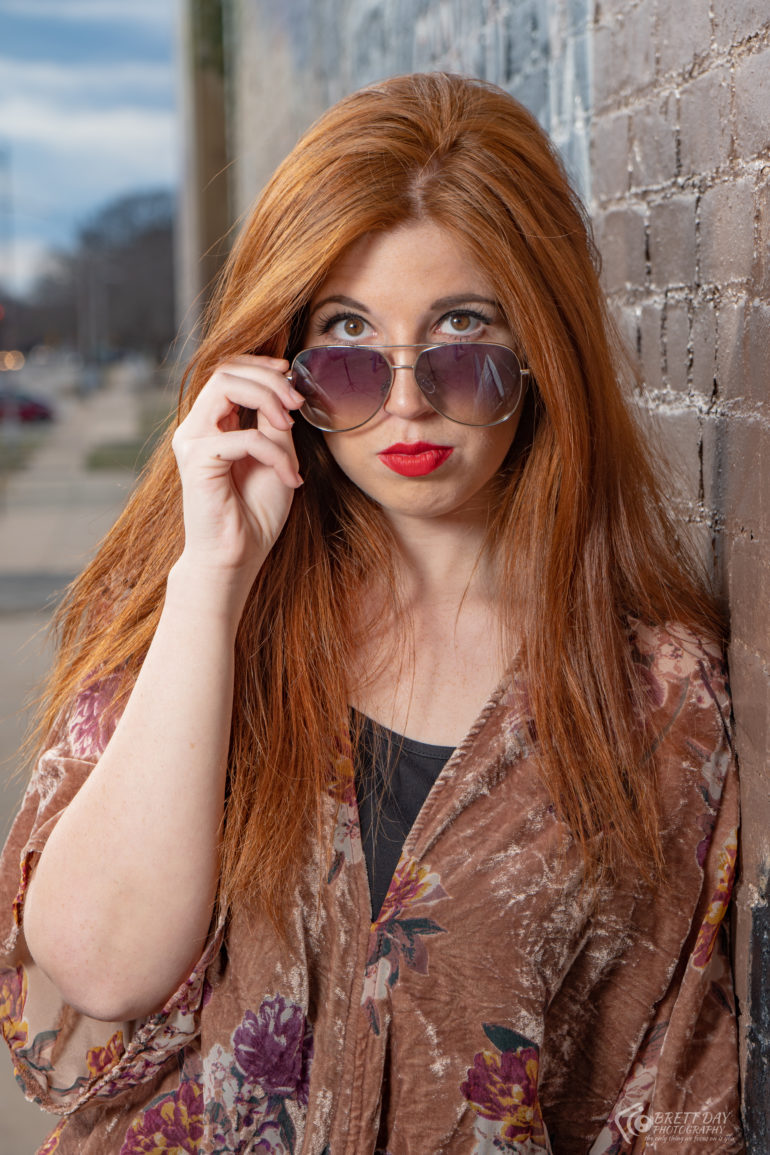
Whether you’re shooting at f1.2 or f12, the cameras with Eye AF capabilities we have listed below will help you nail focus on your subject’s eye every single time you shoot a portrait. Eye AF gives you the freedom as a photographer to work on the overall composition of your pictures more than ever before, which ultimately means you will be able to create shots that may have otherwise been impossible to get in the past. We have rounded up nine cameras with Eye AF that will suit every budget. Check them out below.
Table of Contents
Sony a6100
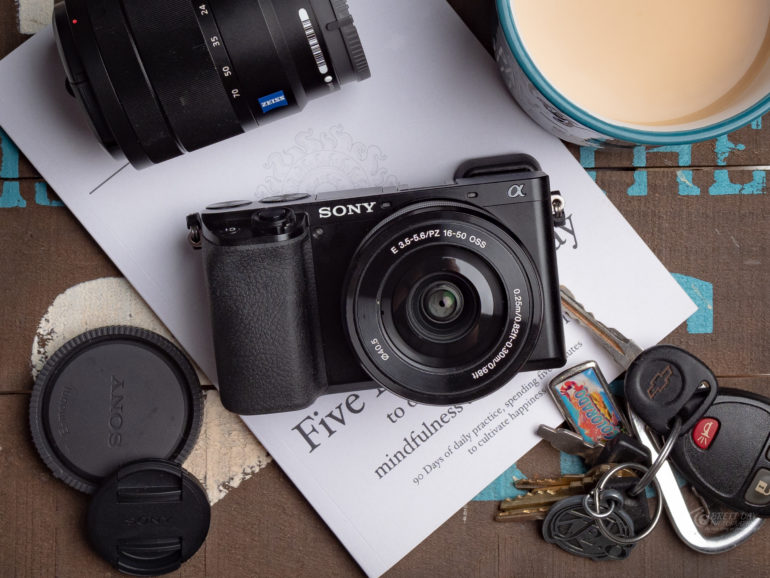
Here are the pros and cons from our full review:
Pros
- Small and very light
- Autofocus system is beyond fast
- 11 frames per second burst mode and 425 AF points
- Real-time Eye AF and Animal Eye AF
- Great tracking capabilities
- Very good overall image quality
- Decent battery life
- Flip-up screen for selfies
- The splash screens that tell new photographers what each mode does is a nice touch
- It’s under $600!
Cons
- The EVF and LCD are very low quality
- No weather sealing
- The layout of the controls should be simplified
- The menu system is still convoluted. Simplify, Sony! Simplify
- You still cannot use the touchscreen to navigate the menus
- Only 1/4000s max shutter speed
- The camera desperately needs a shutter speed dial on the grip
- Just one UHS-1 card slot
- The camera slows down a lot when writing files to the SD card after a burst
- A USB 2.0 port. What year is this? Come on Sony
- No included dedicated charger
Buy now: $598 – $688 with a lens
Fujifilm X-T200 Review
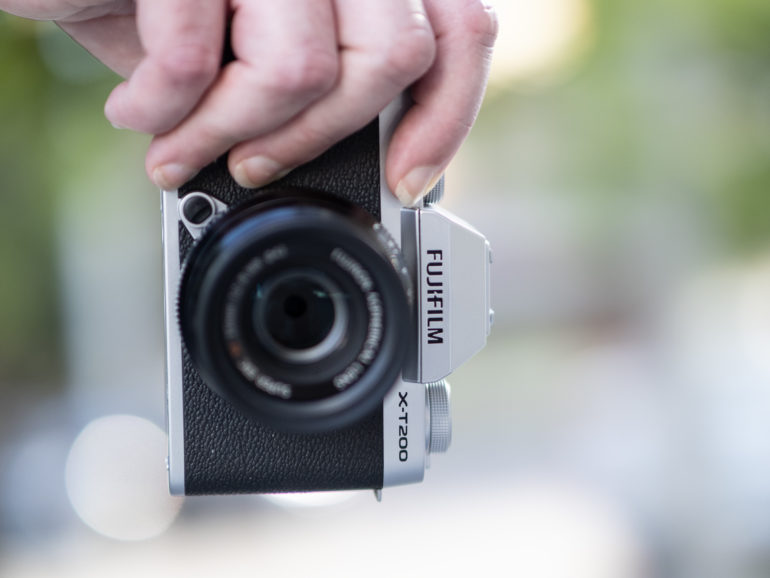
Here are the pros and cons from our full review:
Pros
- A beautiful, elegant design which mixes old and new elements
- Outstanding image quality
- Versatile RAW files
- Great AF performance for the most part
- Excellent high ISO performance
- You can shoot JPEGS all day long and will be nothing but happy
- The touchscreen and touch controls are some of the best on any camera (they’re really that good)
- The high-resolution LCD is also a full flippy screen
- The Fujifilm X-T200 has good battery life
- Lots of 4K video options for those who need it
- It’s just $599 ($799.95 w/kit lens)
Cons
- Only one UHS-1 SD card slot
- No Acros film simulation due to no X-Trans sensor
- A few focusing issues, but nothing crazy
- The touchscreen is a little too sensitive
- The buffer fills quickly due to the speed of the UHS-1 cards
- The camera is unusable for over a minute while the buffer clears
- Shutter maxes out at 1/4000 sec
Buy now: $599 – $699 with a lens
Sony a6600
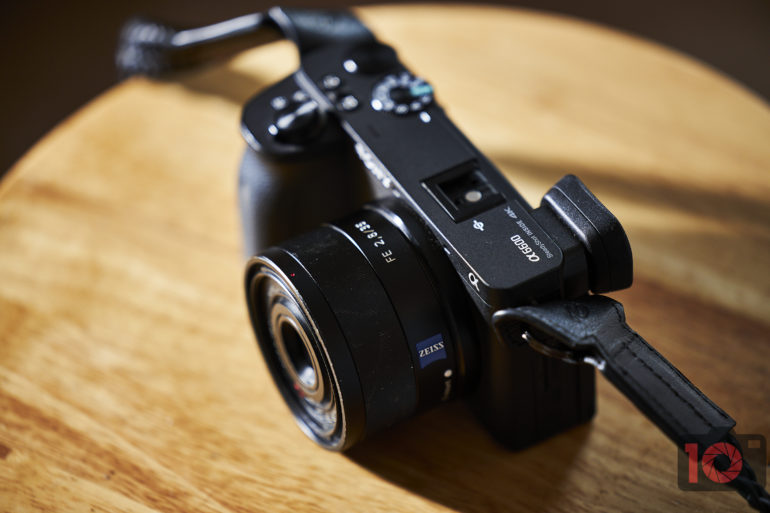
Here are the pros and cons from our full review:
Pros
- Feels better than all other APS-C Sony cameras
- It’s a mini a9
- The bigger battery is a very welcome addition. It gives lots of extra life
- Weather sealing is nice
- Image stabilization
- The combined weather sealing and bigger battery mean you can go all day on a single charge
- Lightweight and small-sized camera
- Quiet shutter in addition to the silent option
- A lot of buttons that help you get around some of the issues, but these shouldn’t be issues to begin with
- Fast-focusing even on the streets with continually changing light
- There is almost no reason to take it off of wide tracking and continuous autofocus. If you want something specific in focus, you can still use the override of the touchscreen focus point selection even in that mode.
- Face detection for animals is very fun
- Low ISO detail retention in highlights and shadows is pretty good
Cons
- No lock on the mode dial
- Sony refuses to give us three direct control dials. Why?
- Sony refuses to put a joystick on the back
- No dual card slots
- Face detection doesn’t seem as advanced as the a7 and a9 series
- Sony still limits a photographer from having full use of the touchscreen
- The screen is sort of low resolution compared to full-frame cameras, and it really shows its age
- It needs a viewfinder that flips up
- Focus peaking on the APS C bodies used to be amazing, and now it’s crap
- Detail loss above ISO 3200. In fact, ISO 3200 and above is just not clean
- Why no USB C charging or port? Only Mini?
Buy now: $1,206.39 – $1,598 with a lens
Nikon Z6
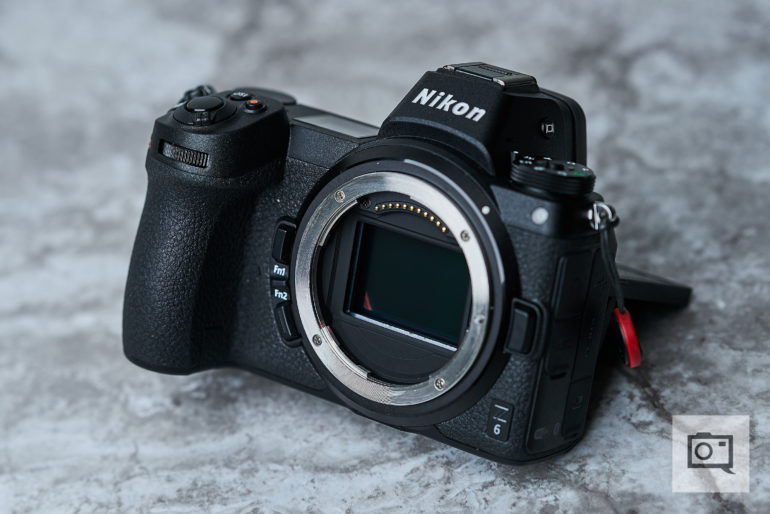
Here are the pros and cons from our full review:
Pros
- Comfortable hand grip
- Excellent Electronic Viewfinder with 100% frame coverage
- EVF protrudes from the camera body, minimizing contact between your nose and the rear LCD
- Top display shows you all of your settings at a glance
- Intuitive touchscreen rear LCD
- Solid battery life when using newly designed EN-EL15b batteries
- Robust weather sealing
- Works with most existing Nikon F mount lenses using the Nikon FTZ adapter
Cons
- Single XQD card slot may be a deal-breaker for photographers with certain workflows
- Colors on the rear LCD were inconsistent when compared to EVF
- Autofocus performance, while better than the Nikon Z7, still leaves much to be desired (Recent firmware updates have improved the AF performance)
- Certain settings were oddly organized within the menus
- There is way too much settings information displayed on the rear LCD, often getting in the way of you framing your shot
Buy now: $1,596.95
Olympus OMD EM1 III
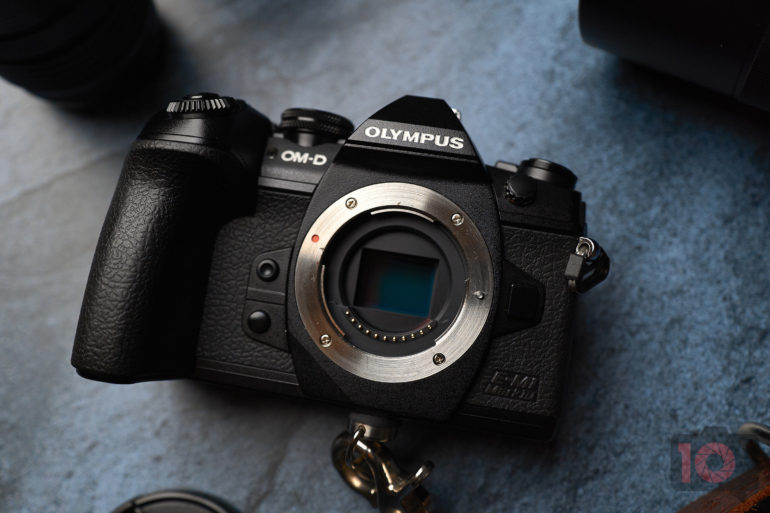
Here are the pros and cons from our full review:
Pros
- Feels nice when shooting for a long time
- We like the shutter sound
- Good continuous autofocus which does tracking
- The processor is fantastic
- The art filters continue to make Olympus unique amongst other camera brands
- Live composite is so incredibly pleasant, along with Starry AF
- It survived sand and saltwater
- Continuous AF+Tracking works well with wide angles
- The custom shooting mode switch on the back is something every adventure brand should have
- This is the foundation for an Olympus camera we’d want to bring with us everywhere
- Handheld high res shot continues to be one of the best things ever
- Face detection works on monkeys
Cons
- Battery life in the heat and the cold
- Still no rating system in the playback menu. Why?
- C-AF + Tracking is useless with telephoto lenses
- Why no touchscreen menus?
- Olympus’s menu system continues to give headaches
- Some of the parts seem very dated. Like the EVF, the sensor, and some of the dials
- A top screen LCD could have made shooting easier
- Why couldn’t it have Dual UHS-II Card slots
- Above ISO 1600, you really need the art filters to take the most advantage of the otherwise too grainy sensor
- Could really use no blackout in the EVF
- Animal Tracking in autofocus is needed
- We couldn’t find spot metering AF linked to the face (or at least it didn’t work for us)
Buy now: $1,598.98

Pro Tip: If you’re a really keen portrait photographer, we always recommend to add an off-camera flash to your portrait workflow. The extra sharpness and the extra drama that artificial lighting can add to an image will help you take your pictures over the edge. You don’t have to spend a fortune to get a great light these days either. This Godox V1 is available for Canon, Fujifilm, Nikon, Olympus/Panasonic, Pentax, and Sony for under $200. Add in the Godox R2 trigger, and you have an off-camera lighting rig that will amaze you.
Fujifilm X Pro 3
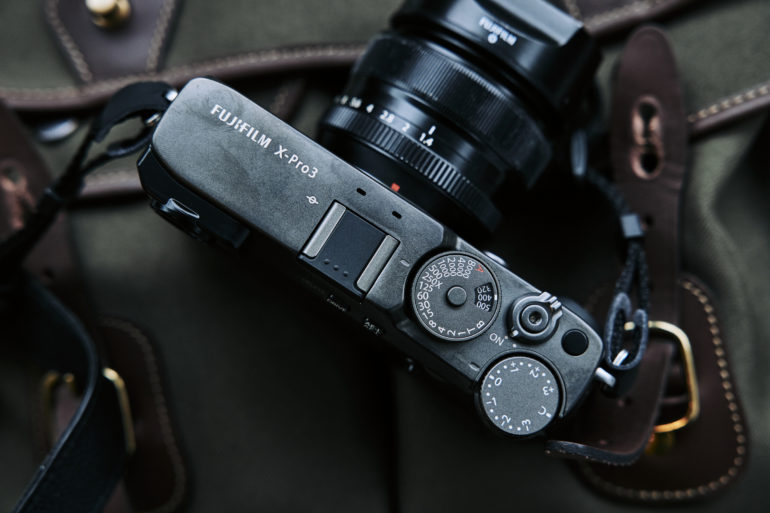
Here are the pros and cons from our full review:
Pros
- Superia is beautiful (Classic neg)
- We love the lack of a major screen
- Autofocus can be fine-tuned for different situations
- Everyone loves the look of Classic neg
- You can push the shadows for forever and get details – the highlights not as much, but they’re still there
- The screen helps you stay focused and aware
- USB C charging ensures that you can keep using the camera
- Video features deliver pretty video
- Arguably, you don’t need to edit the RAW files because the JPEGs let you do so much
- For street and documentary shooting, the hidden screen will keep you in the zone when shooting
- Face detection is fantastic when not trying to track erratic movements
- Acros and clarity enhancements are going to make you fall in love with Fujifilm all over again
- The Chrome effect for skies is subtle and very nice
- Autofocus is fantastic for events and most professional work
- Fujifilm’s collection of small primes pair wonderfully with this camera
- The best camera to embrace high ISO noise on the market
- Using the OVF will prolong battery life at the expense of slower autofocus
- This is less of a street camera than a documentary and event shooter’s camera
- The wider lenses make zone focusing easy. This is imperative for street photography
- Multiple exposure mode is a very welcome addition
- Very good battery life
Cons
- Has problems keeping subjects in focus when they’re continuously moving
- When you need the screen, it’s a bit of an annoyance; like when photographing a portrait subject in motion
- This camera desperately needed Blackout Free EVF shooting
- Touchscreen menu navigation should be on this camera
- Autofocus needs improvements
- Rated images in-camera aren’t brought into Capture One Pro
- Enhancing the clarity makes the camera take extra time to render the image
- The battery life in long term use is about on par with the new Sony Z batteries.
- For street shooting, the wide and tracking AF area still lets you select a zone, but it shouldn’t. This can throw off shooting in real-life street situations
- Shooting from the hip? You may accidentally hit the function button and not the shutter release
- Exposure dial needs a locking mechanism
- Multiple Exposure mode saves the final images only as JPEGs
Buy now: $1,729
Canon EOS R
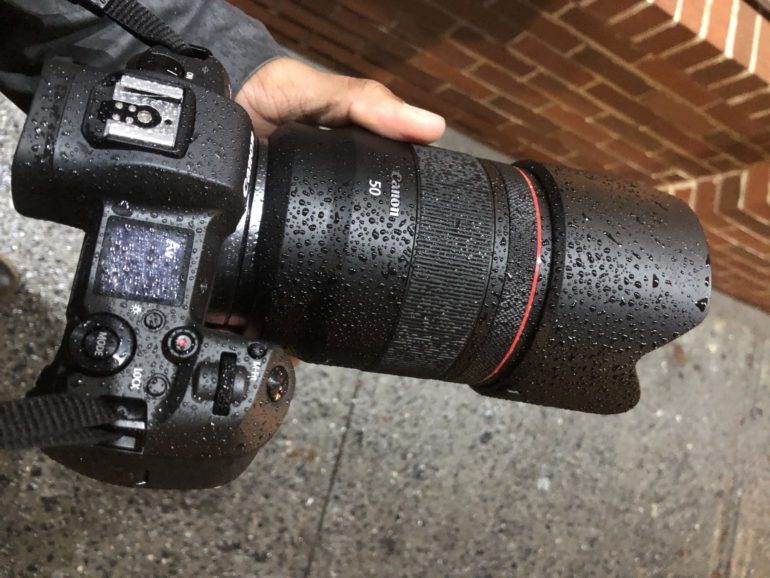
Here are the pros and cons from our full review:
Pros
- Build quality
- Weather sealed like crazy
- Autofocus is good
- Protects the sensor when off
- Canon’s menu system is still simple
- Ergonomics feel nice
- With a lightweight lens, it feels just as nice as a Sony camera
- These are some of Canon’s best RAW files in years
- Big improvement in the face and eye detection since the recent updates
- Good battery life
- Fast Wifi transfers, though not as simple as Sony’s
Cons
- Needs Dual SD cards
- Needs a joystick
- The magic touch bar is odd and could use refinement
- Optimizing the way the ISO, aperture, and shutter speed dials work, such as the automatic metering for ISO, not cool
- Bigger than Sony, but the L lenses are about on par with their G Master glass
Buy now: $1,799
Sony A7R IV
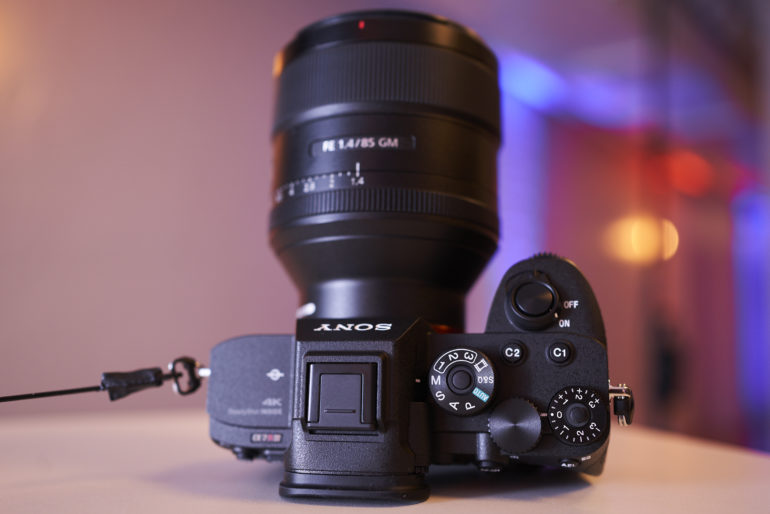
Here are the pros and cons from our full review:
Pros
- Improved ergonomics
- Blazing fast autofocus
- Excellent weather sealing
- Anti-flicker shooting
- Dual UHS-II SD card slots
- More resolution than most photographers will need
Cons
- Limited touchscreen functionality: You still can’t navigate the menus or interact with the display
- Large file sizes (to be expected)
Buy now: $3,198
Sony A9 II
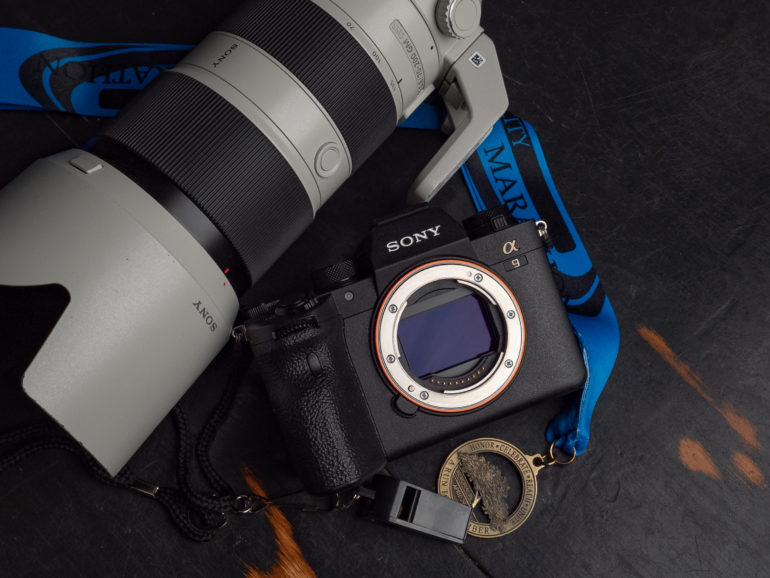
Here are the pros and cons from our full review:
Pros
- The insanely fast and accurate autofocus system
- Seriously impressive battery life
- The best Sony camera from an ergonomics standpoint to date
- Silent shooting is truly silent
- Great overall image quality
- Blackout free shooting
- Weather sealing
- The EVF and LCD are both great
- Effective 5-Axis Image Stabilization
- Eye AF is on a completely different level than the competition
- It’s very well priced considering just how much tech you’re getting
Cons
- Images at ISO 6400 are a little muddy and lose a little detail which is a problem for sports shooters who spend a lot of time in poorly lit venues
- The menu system. Come on Sony, it’s time to rework it
- The build quality, while good, it could be so much better
Buy now: $4,498


